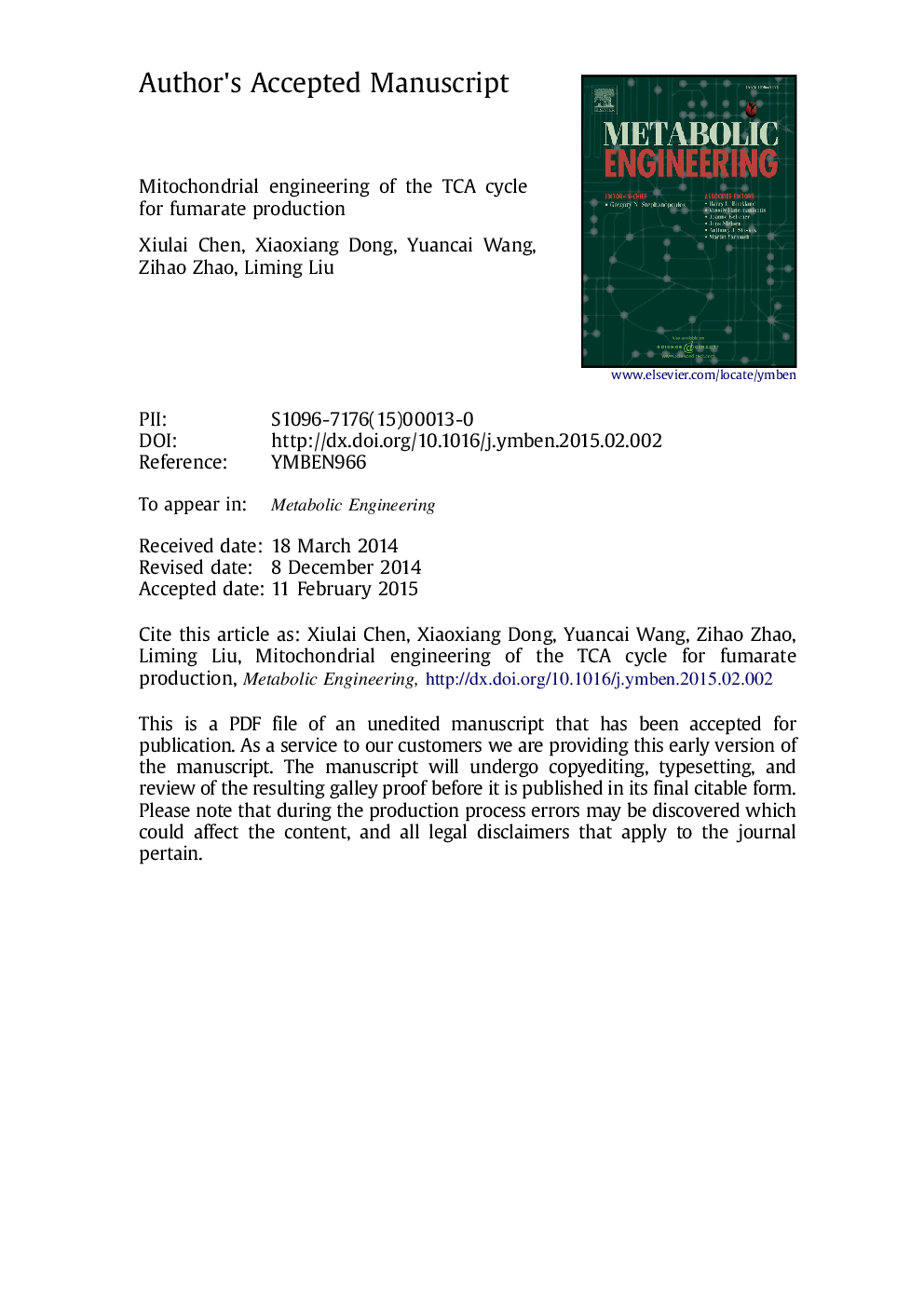| Article ID | Journal | Published Year | Pages | File Type |
|---|---|---|---|---|
| 6494349 | Metabolic Engineering | 2015 | 40 Pages |
Abstract
Microbial fumarate production from renewable feedstock is a promising and sustainable alternative to petroleum-based chemical synthesis. Here, mitochondrial engineering was used to construct the oxidative pathway for fumarate production starting from the TCA cycle intermediate α-ketoglutarate in Candida glabrata. Accordingly, α-ketoglutarate dehydrogenase complex (KGD), succinyl-CoA synthetase (SUCLG), and succinate dehydrogenase (SDH) were selected to be manipulated for strengthening the oxidative pathway, and the engineered strain T.G-K-S-S exhibited increased fumarate biosynthesis (1.81 g Lâ1). To further improve fumarate production, the oxidative route was optimized. First, three fusion proteins KGD2-SUCLG2, SUCLG2-SDH1 and KGD2-SDH1 were constructed, and KGD2-SUCLG2 led to improved fumarate production (4.24 g Lâ1). In addition, various strengths of KGD2-SUCLG2 and SDH1 expression cassettes were designed by combinations of promoter strengths and copy numbers, resulting in a large increase in fumarate production (from 4.24 g Lâ1 to 8.24 g Lâ1). Then, through determining intracellular amino acids and its related gene expression levels, argininosuccinate lyase in the urea cycle was identified as the key factor for restricting higher fumarate production. Correspondingly, after overexpression of it, the fumarate production was further increased to 9.96 g Lâ1. Next, two dicarboxylic acids transporters facilitated an improvement of fumarate production, and, as a result, the final strain T.G-KS(H)-S(M)-A-2 S reached fumarate titer of 15.76 g Lâ1. This strategy described here paves the way to the development of an efficient pathway for microbial production of fumarate.
Keywords
Related Topics
Physical Sciences and Engineering
Chemical Engineering
Bioengineering
Authors
Xiulai Chen, Xiaoxiang Dong, Yuancai Wang, Zihao Zhao, Liming Liu,
